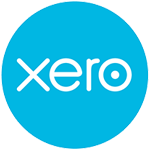Xero to QuickBooks conversion is just another task you may not be able to do-it-yourself. Considering that there are multiple ways of exporting data, you have to focus on your solution.
If you want to convert accounting data, be more vigilant and careful because even a single mistake can be harmful. There are many solutions as well as service providers out there, but you must choose the right conversion solution to migrate from Xero to QuickBooks.
Together with QuickBooks, we are offering Australian businesses a free migration to QuickBooks Online from Xero.
For South African businesses, we are offering free migrations to Quickbooks Online subsidised by QuickBooks. It is valid for one historical year plus Current year to date.
For Rest of the world businesses (Other than USA, UK, Canada, Australia, Africa), we are offering free migration to QuickBooks Online, Valid for one Historical year plus Current year to date and for single currency files.
Features of QuickBooks Online
1. Automated Banking: Sync your bank accounts automatically with QuickBooks Online to keep your books updated and reduce manual data entry.
2. Invoicing: Create custom, professional invoices in minutes, send them electronically, and track payments from one platform.
3. Expense Tracking: Easily categorise and track business expenses, which can be directly linked to your accounts for accurate budget monitoring.
4. Payroll Integration: Manage employee payments within QuickBooks Online, including automatic tax calculations and real-time payroll updates.
5. Multi-Currency Support: Conduct business globally with QBO’s multi-currency feature, automatically updating exchange rates and conversions.
6. Cloud-Based Access: Access your financial data from anywhere, anytime, using any device with internet connectivity.
7. Real-Time Reporting: Get instant insights with real-time dashboards and reports that help you make informed business decisions.
8. Tax Compliance: Stay compliant with local tax laws with automated tax calculations and intuitive reporting tools.
9. Cash Flow Management: Monitor your cash flow actively to understand better your financial position and plan for future investments or expenses.
10. Scalable Solutions: As your business grows, QuickBooks Online grows with you. Easily adjust your services to match the needs of your expanding enterprise.
The Conversion Process
It is not easy!
Migrating from an existing accounting system to another is a complicated process. It requires proficiency, accuracy, speed, and thorough knowledge to guide businesses. Even the most experienced team may not know the data migration process inside out. Therefore, when the conversion is done, it is critical to focus on accuracy and quick turnaround time.
Xero to QuickBooks migration process is a full service including conversion of lists as well as transactional data from one accounting system to another. You may wish to convert data to QuickBooks Pro, QuickBooks Premier, Mac, Enterprise, Accountant, or QuickBooks Online (QBO).
For this process, administrator access is required to the Xero account. Nothing you need to do if you hire an experienced service provider to convert Xero to QuickBooks Online.
Once the process is done, you receive a report from the team. The process is seamless and it includes setting up QuickBooks, data importing, and conversion audit.
First Things First
When converting business files, the first concern is whether to include transactions history or not. If yes, how far would you like to go?
Obviously, it is convenient to have a history of all transactions in a file rather than searching archived records, past scanned reports or paper records. Nonetheless, including transactional history also increases effort and cost to achieve conversion.
Before converting all financial data, make a copy of the income statement reports and balance sheet for all dates you want, using accrual and cash methods. Also, include detailed accounts of payables and receivables reports. These reports would be used further to verify conversion post-completion.
In addition, it would be wise to lock Xero files for the dates prior to the date of conversion so that no one could change data after the migration begins.
Step-by-Step Xero to QuickBooks Conversion
Migrate from Xero to QuickBooks Online in few simple steps:
Step#1: Xero Account Chart Conversion
The first step, to begin with, is to set up the Chart of Accounts (COA) in QBO to match it with Xero. While some may find it convenient to create QBO accounts and match that in Xero, there are other easier ways to do it.
Start by exporting COA from Xero. Go to Settings > Chart of Accounts > Export.
You can download the CVS file, open it with Excel or other spreadsheet program, and edit it. Note that the first three columns in the file corresponding to the first three columns required importing to QBO, which makes it convenient.
Xero accounts have three-digit numbers with no subaccounts. However, the common way of grouping accounts under a category or heading account is by adding digits after hyphen – 510-01, 510-02 and so on.
QBO allows four columns of information to be imported:
- Account number
- Account name
- Account type
- Detail type
Step#2: Import Customer and Vendor Details into QBO
Next, you have to import customers and vendor details. This is a herculean task, as Xero does not acknowledge the difference between customers and vendors. Details are grouped together in the form of contacts, which include both customers and vendors.
It is best to export them together and separate them into customers and vendors separately. As such, they would appear on both the lists for importing, but the name must be altered in the second imported list to prevent failure.
There is more information in an exported Xero file than it can be imported into QBO. Here’s an example – Xero file includes both postal as well as shipping addresses, but QBO only allows you to import one address. So, you would have to alter the address or its format by combining the address lines into a single line and bringing the first and last name into a single field.
To begin, download the format to import to QBO. To do that, choose “Import Data” option from Gear Icon > Tools and choose the type of data import you wish to do. Under this field, you can enter the name of the file to import and click on the link and download the sample file.
Step#3: Import Products & Services into QBO
In the next step, you must import products and services.
To do this, regardless of inventory tracking, check the items listed on the Xero inventory page. As with QBO, items may be used in different types of transactions such as bills and invoices. Such items must be placed appropriately before the import process begins.
Like vendors and customers, Xero export file needs some manipulation in order to match the import format to fit QBO.
In case of inventory tracking, expect a long import list and lots of paperwork. For items inventory in stock, ensure both buying cost and quantity are correct. This is a crucial step to establish QBO inventory value, although multiple journal entries may be needed to counterbalance the opening balance entries.
In addition, make sure you have selected the “Buy” and “Sell” checkboxes for each item as well as “Track” checkbox for inventory items.
Step#4: Import Bill Transactions and Invoices
It is time to transfer transactions to QuickBooks. You can import up to 500 bills or invoices at a time. However, if there are more files, split them by date and organize. You cannot import these transactions into QBO directly; it requires a third-party program.
Choose a powerful importer for transactions for seamless integration.
Step#5: Import all Payroll Transactions
If your files include payroll transactions, you have to handle them. However, a lot of this depends on the service provider.
Many providers prefer a simple way of importing them in the form of bills of each employee. This would allow you to allocate all liability accounts and expenses properly. Once you have successfully imported bank transactions, they can be paid off.
Step#6: Import all Bank Transactions
Finally, it is time to import all bank transactions. However, this step is difficult because it involves complicated programs like accounting.
You can export general ledger transactions, but a lot of manipulation is required to format them. So, you have to find an easier way to get there.
QBO Bank Feed function is extremely helpful in this matter. It works well with Xero and other accounting platforms too. You can classify over hundreds of transactions simultaneously, and match up invoice payments and bills.
If there are a large number of files and data, break up into 1000 transactions or less, which is the limit of importing files to bank feeds. From that point, you can classify them and accept them into the register.
Step#7: Verification
Once all the steps are done, it is time to complete the file. Before verification, go to Chart of Accounts and edit all accounts grouped together with hyphens and digits.
There are two ways to verify. You can use either or both,
Firstly, settle your bank accounts. You can reconcile in one big account or in smaller pieces. The best way is to do it year-by-year. However, if you face any problems, break them into months. If the Xero file is maintained properly, this should not be a problem.
Once you have settles the bank accounts, compare the profit-loss reports and balance sheet for all the sates using cash and accrual methods in the QBO with the data saved from an earlier Xero file. In addition, verify the detailed AP and AR reports to check if it is matching or not. Assuming that all is well, the conversion process is complete.
What cannot be converted from Xero to QuickBooks?
Some of the things that may not be converted include:
- Bill line item details
- Budget
- Location
- Custom templates
- Bank settlements
- Previously memorized transactions
- Payroll summary data
- Non-posting transactions like estimates, purchase orders, and sales orders
- Multi-currency data
- Vendor and customer credits
Conclusion
There may be many unpredictable situations, which have not been covered in this post. As Xero has countless features like tracking – an additional level of classification similar to QBO class tracking – it may not be possible to explain it all. Of course, QuickBooks has many settings that need to be configured just like in case of any new file for a company. Customize new forms, third-party apps connected, and bank feeds connections. Users should have a set up to access the files.
Converting from Xero to QuickBooks has several benefits. Not only is it an innovative feature but it also ensures that your work function improves. MMC Convert is your best bet to migrate from Xero to the latest QuickBooks seamlessly and securely. Call us today.








Speak Your Mind